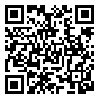Objective: Since Spielberger's State–Trait Anger Expression Inventory–2 (STAXI–2) has enormous potential for research and therapy, the current study aimed to investigate psychometric properties and normalization of STAXI–2 among Iranian college students.
Materials & Methods: Descriptive–survey research method, developing an instrument one, was used. 1140 students (Mean age=21.92, SD=2.89) were drawn from Tehran University via cluster sampling method. 554 (48.6%) and 586 (51.4%) participants were females and males respectively. Among participants 1080 were singles. The participants were asked to complete two instruments. One of these instruments STAXI–2 and other was one of Multi–dimensional Anger Inventory, Over controlled Hostility Scale, Oxford Happiness inventory, Emotional and NEO– Five Factor Inventory.
Results: There were not observed significant differences between females and males participants in most sub–scales of STAXI–2. Also data analysis demonstrated that STAXI–2 and its subscales had significant relationship with parallel instruments. Moreover, the results showed significant mean differences between two groups including high and low emotion intelligence groups and all subscales of STAXI–2. Factor analysis also extracted as many as factors in any part of STAXI–2 in comparison with original version. Based on T scores, separate norms tables were reported.
Conclusion: STAXI–2 has an appropriate validity and reliability to measure anger in Iranian young population. Therefore, STAXI–2 as a state and trait assessment device can be used in clinical sets and research
Received: 15/03/2010 | Accepted: 8/12/2014 | Published: 8/12/2014
| Rights and permissions | |
 |
This work is licensed under a Creative Commons Attribution-NonCommercial 4.0 International License. |


